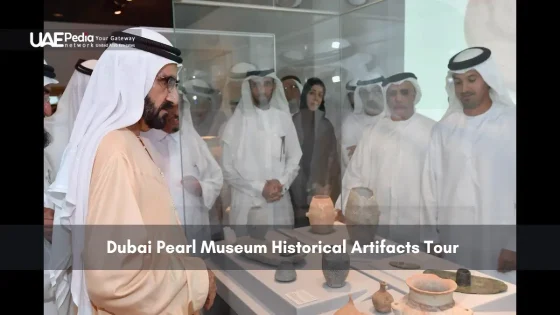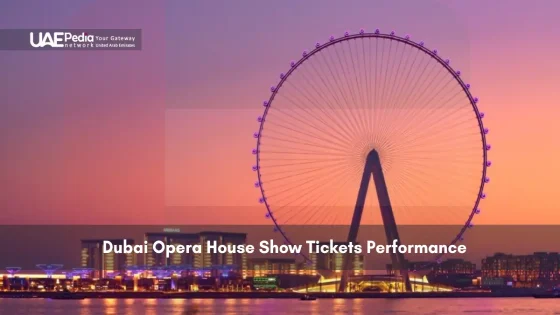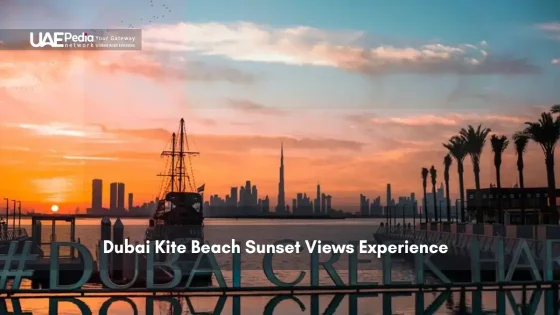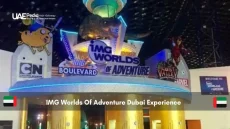What if we told you a single oyster shell once shaped an entire nation’s destiny? Long before skyscrapers dotted the skyline, the UAE’s heartbeat pulsed beneath the waves, where daring divers risked it all for nature’s hidden treasures. Tucked inside the Emirates National Bank head office, the Dubai Pearl Museum isn’t just a collection of relics—it’s a time capsule of grit, innovation, and the shimmering soul of a maritime past.
Walk through its doors, and you’ll find more than gleaming jewels. Interactive displays and weathered tools whisper tales of sailors who navigated the Gulf’s tides, their lives intertwined with the rhythm of the sea. This cultural hub bridges eras, blending ancient trade routes with touchscreens that unravel how pearls fueled the region’s growth.
From intricate diving weights to maps tracing centuries of maritime trade, every exhibit feels like flipping through a family album—one where the UAE’s ancestors star as both adventurers and entrepreneurs. Floor-to-ceiling windows frame modern Dubai outside, a stark contrast to the humble dhows showcased within.
Key takeaways:
- Discover how pearl harvesting built communities and fueled the UAE’s early economy
- Explore rare collections inside a landmark building offering panoramic city views
Exploring dubai pearl museum historical artifacts: A Deep Dive into Pearl Heritage
Before oil transformed skylines, the Gulf’s economy thrived on treasures pulled from its depths. The region’s identity was forged by daring souls who plunged into turquoise waters, their hands grasping not for gold, but for nature’s glimmering gifts. This legacy lives in carefully curated displays that make history feel as vivid as the salt spray on your skin.
The Historical Significance of Pearls in the UAE
For generations, coastal communities measured wealth in moonlit iridescence. Divers braved jellyfish stings and shifting tides, their woven baskets holding fortunes. These natural gems funded everything from spice trade routes to family homes—a currency as vital as today’s dirham.
You’ll find tools worn smooth by calloused hands: nose clips carved from tortoiseshell, rope-scarred diving stones. Each artifact whispers of moonlit dhow journeys and dawn returns. One display even features a ledger from 1892, detailing how 300 divers once supplied markets from Bombay to Paris.
Preserving a Legacy Through Timeless Exhibits
The museum’s crown jewel? A collection gifted by Sultan Ali, showcasing jewelry that adorned royal courts. Intricate necklaces reveal how artisans transformed raw finds into wearable art. Interactive screens decode grading techniques—size, luster, symmetry—that determined a harvest’s value.
Three things make this space unforgettable:
- Hands-on history: Compare modern gemology tools with century-old loupes
- Voices from the deep: Audio recordings of retired divers sharing harrowing tales
- Living traditions: Workshops where Emirati jewelers demonstrate ancient knotting methods
Stand before floor-to-ceiling windows, and you’ll see the past reflected in Dubai’s glass towers—proof that risk-taking and vision still define this land.
Uncovering the Economic and Cultural Impact of Pearl Diving
Every sunrise brought a gamble: would today’s dive fill the nets with nature’s currency or leave hands empty? For generations, Gulf communities staked their survival on this delicate balance. The sea wasn’t just a workplace—it shaped laws, traditions, and even marriage dowries.
Pearl Trade and Its Role in Early Dubai Economy
By 1900, over 1,200 ships sailed from the Gulf annually, carrying treasures to Europe and Asia. A single season’s haul could fund entire neighborhoods. You’ll find faded invoices in the exhibits showing how merchants traded pearls for rice, textiles, and gold—a global economy in miniature.
| Era | Key Export | Annual Value (Adj. for Inflation) | Workforce |
|---|---|---|---|
| Pre-1930s | Natural Pearls | $95 Million | 30,000+ Divers |
| Post-1960s | Oil | $180 Billion | 250,000+ Workers |
Influence on Coastal Communities and Heritage
Fishing villages buzzed with rope-makers, net-weavers, and pearl graders. Elders still recall songs sung to time dives—each melody matching the rhythm of a diver’s breath-hold. When you hear these tunes in the museum’s audio clips, you’ll grasp how tightly culture and survival intertwined.
Reviving Traditional Diving Techniques
Modern Emirati freedivers now teach ancestral methods: reading wave patterns, conserving oxygen, and spotting oyster beds. Workshops here showcase stone weights and woven baskets used today—not as tools, but as bridges to the past. As one instructor notes, “We don’t dive for pearls anymore. We dive for memory.”
Experience the Exhibits: Historical Artifacts and Interactive Displays
Imagine slipping your hands into century-old rope grooves worn smooth by generations of seafarers. This space transforms time-worn objects into storytellers, pairing barnacle-encrusted tools with holographic projections that resurrect forgotten voyages.
Ancient Diving Tools and Artifacts on Display
Rust-caked baskets sit beside polished brass scales—tools that measured both oysters and human endurance. One case holds a diver’s leather nose clip, its edges molded to fit faces lost to time. Nearby, stone weights etched with family markings reveal how crews tracked their hauls.
Look closer at the 1923 diving logbook. Its smudged entries detail storms survived and crews lost—a ledger of risk and reward. These aren’t relics behind glass. They’re tactile proof of an economy built on breath-holding and hope.
Immersive Interactive and Virtual Reality Experiences
Strap on a VR headset, and suddenly you’re descending into turquoise depths. Your virtual hands fumble with oyster clusters as fish dart past—until a jellyfish sting makes you yank off the gear. Laughter mixes with newfound respect for those who did this daily.
Touchscreens decode pearl grading systems used in Bombay markets. Swipe through 3D models of dhows, comparing their cargo capacities to modern shipping containers. One display even lets you hear the difference between a “gem-quality” pearl and its flawed counterpart when tapped against teeth—an age-old testing method.
As one visitor remarked, “It’s like time-traveling with a tech-savvy historian.” The past isn’t just preserved here—it’s rebooted for a generation raised on screens and swipes.
Connecting Past and Present: The Role of Pearl Jewelry in Emirati Culture
Ever notice how some accessories carry more than beauty? In the UAE, jewelry boxes hold heirlooms that map generations—each piece a compass pointing to shores where survival and artistry collided. Before oil reshaped skylines, these organic gems stitched together communities, their value measured in skill and story rather than carats.
Symbolism, Craftsmanship, and Cultural Identity
Walk through the displays, and you’ll spot a 1920s bridal necklace—its pearls smaller than modern cultured varieties, but impossibly radiant. Each bead was hand-strung using knotting techniques perfected over centuries, ensuring if the strand broke, only one gem would drop. This wasn’t just jewelry—it was engineering.
Local artisans still employ these methods today, blending ancestral knowledge with contemporary design. One workshop leader explains: “My great-grandfather judged pearls by moonlight. I use loupes and LEDs—but the reverence remains.”
| Era | Symbolic Meaning | Craftsmanship Techniques | Cultural Impact |
|---|---|---|---|
| Pre-Oil | Wealth, marital status | Hand-knotting, natural materials | Trade currency, community bonds |
| Modern | Heritage pride, artistry | Laser grading, hybrid designs | Cultural tourism, identity preservation |
The museum’s collection reveals how jewelry served as both personal adornment and historical ledger. A 1903 hairpin tells of a diver’s daughter who bartered it for medical supplies—proof that these pieces often doubled as lifelines.
Visitors exploring pearling heritage tours quickly realize: understanding these creations means grasping how coastal communities thrived against odds. It’s why contemporary Emirati designers frequently reference pearl diving traditions in their work—bridging eras through wearable history.
As you exit, glance at the modern skyline through pearl-shaped display cases. The juxtaposition whispers what every local knows: progress doesn’t erase heritage—it polishes it.
Plan Your Visit: Practical Tips for Experiencing the Museum
Ready to step into a world where history meets modern convenience? Nestled on the 15th floor of the Emirates National Bank, this cultural gem requires smart planning to fully appreciate its compact yet impactful displays. Here’s how to make your visit seamless and memorable.
Booking a Guided Tour for an Intimate Experience
Small-group tours unlock secrets even regular visitors miss. Reserve through Emirates NBD’s website at least 72 hours ahead—spots fill faster than a dhow in favorable winds. Guides decode Sultan Ali Al-Owais’ collection with stories about pearl grading techniques that shaped regional trade.
Visitor Information and Accessibility
Elevators whisk you to the 15th floor, where wide aisles accommodate wheelchairs and strollers. Morning visits (9-11 AM) mean fewer crowds and better light for admiring jewelry craftsmanship. Don’t miss the tactile exhibit replicating oyster-opening challenges—it’s a crowd favorite.
| Tour Type | Duration | Group Size | Special Features |
|---|---|---|---|
| Self-Guided | 45 mins | Unlimited | Audio App Available |
| Curator-Led | 75 mins | Max 8 | Handle Replica Tools |
| VIP Experience | 120 mins | Private | Skyline Photo Session |
Exploring Nearby Attractions and Cultural Sites
Pair your visit with these gems:
- 5-min walk: Emirates NBD’s ground-floor gallery showcasing UAE’s banking evolution
- 10-min drive: Traditional abras (water taxis) at Dubai Creek
- 15-min metro ride: Al Fahidi Historic District’s wind-tower architecture
Pro tip: Wear layers—the crisp AC contrasts sharply with Dubai’s outdoor warmth. As one recent visitor noted, “The way exhibits balance ancient techniques with tech surprises? That’s the real treasure here.”
A Timeless Journey Through Dubai’s Heritage
What if you could hold centuries of tradition in your palm? The Emirates National Bank’s 15th-floor treasure trove does just that, where Ali Al-Owais’ legendary collection sparkles beside panoramic city views. Each Gulf pearl here whispers of sailors who charted the Arabian Gulf’s tides, their stories etched into diving tools and moonlit maps.
You’ll leave understanding how natural pearls built empires—not through dusty displays, but by tracing fingerprints on salt-worn ropes. Modern skyscrapers gleam outside, yet inside, visitors uncover the gritty truth behind the pearl industry’s golden age. It’s where heritage isn’t preserved—it breathes.
This isn’t just about the past. Like the UAE’s defensive structures that shaped regional history, every artifact here guards cultural memory. Whether you’re a first-time explorer or a seasoned traveler, the collection reshapes how you see progress—proving innovation grows deepest when rooted in tradition.
Ready to walk where history’s pulse still thrums? The 15th floor awaits. Come touch the grit beneath the glitter, and carry forward stories that outshine any gem.
You’ll find it on the 15th floor of the Emirates NBD headquarters in Deira—a nod to how pearls shaped Dubai’s financial roots. Pro tip: book ahead for guided tours to unlock stories behind Sultan Ali Al-Owais’ legendary collection!
Before oil, divers risked everything harvesting these treasures by hand. The museum showcases why their irregular shapes and soft glow made them prized globally—until cultured pearls changed the game. Spoiler: spotting a “Dana” pearl here feels like finding buried treasure!
While you won’t dive into the Gulf, interactive displays let you “virtually” gauge oyster weights or test barter skills like old-school traders. Families love the replica dhow boat—perfect for imagining moonlit voyages across Arabian waters!
Pearls weren’t just currency—they wove into weddings, poetry, and identity. Exhibits reveal how divers’ nasal clips or woven baskets inspired modern jewelry designs. Even today, heirloom necklaces whisper tales of resilience against monsoons and market crashes.
Yes! Elevators and ramps ensure smooth access. Guides often share quieter visiting hours if crowds feel overwhelming. Don’t miss the tactile displays—they let you feel oyster textures and pearl gradings up close.
Wander Deira’s Gold Souk (10 minutes away) to see pearl traders in action, or hop an abra boat to Al Seef. Craving more history? The Dubai Museum in Al Fahidi Fort ties it all together—like a time capsule of sea-to-skyscraper ambition!



















